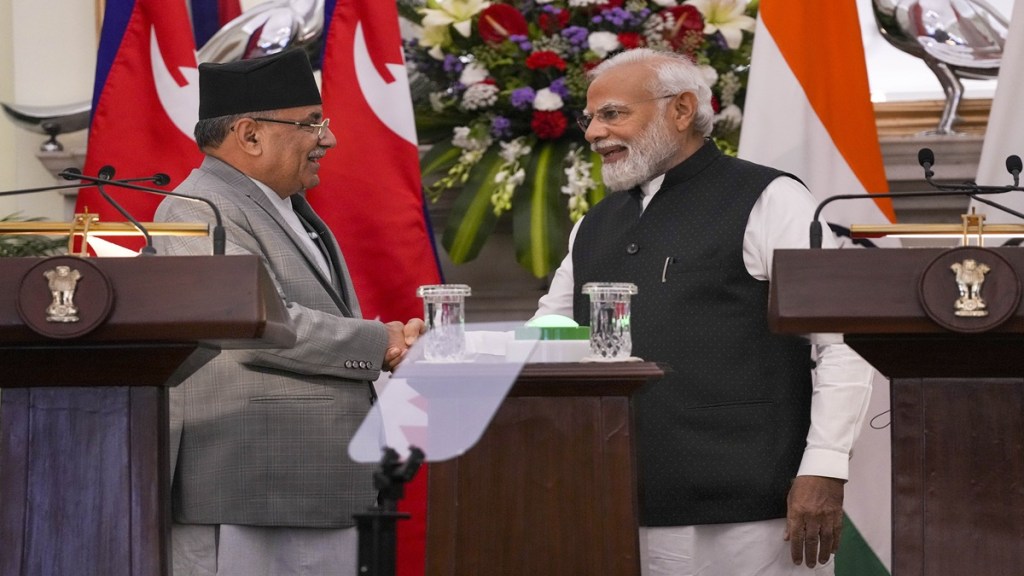By Prof Pramod Shreshta & Sharon Susan Koshy
The future of India-Nepal relations has been examined from multiple perspectives over the years, but especially since Nepal became a new republic there have been speculations on the contours of a new direction for the relations. The myriad opportunities for the two countries to cooperate and co-exist have been emphasized by diplomatic communities and foreign policy pundits, although little progress has been made. The historical and cultural linkages and geographical proximity between India and Nepal have acted as catalysts to enable warm and cordial relations in the past. The religious and cultural synergies form a splendid backdrop for vibrant economic, social, political and cultural linkages between India and Nepal.
If composite factors including history and geography have guided the people in both countries to live in perpetual peace, harmony and understanding, the modern-day imperatives have urged them to envision a collective endeavor for a common future. Nepal’s government has faced unprecedented currents since 2006- uprising impinging on the possibilities of realizing ‘peace’ ‘stability’ and ‘development’. In this context, it is important to understand the concept of freedom in India-Nepal relations as one that nurtures actual opportunities for development and processes that allow freedom of actions, initiatives and decisions. Given that the recent trends in international political economy leave South Asia with enormous opportunities, India and Nepal must envision a common path to take advantage of the shifting concentrations of supply chains. Such orientations for economic growth should provide a segway in the complex relations to resolve issues of political dimensions as well.
Expectations
To live up to these expectations, the visit of Nepalese PM ‘Prachanda’ to India was expected to instill mutual trust and respect which was at an all-time low during PM Oli’s tenure. Public opinion in Nepal towards its southern neighbour is on the decline, and unsurprisingly, Nepalese people expect answers to burning questions of border issues, EPG report, energy trade to Bangladesh via India, and direct entry routes for flights to Pokhara and Bhairahawa.
On the other hand, the Indian counterparts were prepared to focus on energy, transit, trade, connectivity and infrastructure as the crux of the discussions. Clearly, the discrepancies in priorities are worrisome hinting at India’s ignorance of Nepalese sensitivities which could prove costly for India, given Nepal’s opportunities from its Northern neighbour, China, the largest economic and military power in Asia.
Hope for the future
Despite the lows in the relationship there have been promising moments for building momentum towards a shared developmental partnership. Since the power cooperation was signed last year, Nepal exported 450 MW of electricity to India. However, there is an urgent need for India to rebuild strength and trust through fast tracking developmental works such as the Pancheshwar multifunctional power project which is long-delayed, and the Lower Arun and Phukot-Karnali Hydro Projects. Such considerations also need to be extended to Nepal’s concerns regarding anti-dumping measures imposed on its jute exports to India, widening trade deficits, and Rules of Origin for products.
The talks shed light on the importance of taking forward the progress made in border management including the integrated check-post in Birgunj, the cross-border petroleum pipelines, broad-gauge rail line and transmission lines. Incidentally, the prime ministers signed key agreements on power trade, and trade and transit aimed at increasing physical connectivity via rail. The promise that India will import 10,000 MW of power from Nepal is a striking example of the need to design consistent channels of communication which can lead to long-term development targets.
Projects to increase people-to-people and trade connectivity have been flagged off with the inauguration of integrated check posts at Nepalgunj and Rupaidha, and Birgunj in the past, and the initiation of cargo trains from Bathnada in Bihar. There have been agreements on issues such as cross-border digital payment systems which are expected to drive tourism and trade opportunities for both sides.
One area where talks were held, although no substantial agreements were penned, was climate change. Both leaders talked about flood control mechanisms to be adopted, however missed a critical opportunity to comprehensively address the issue of climate change which will have serious repercussions in the coming years in the Himalayan region. Although many non-governmental agencies including ICIMOD warn about the consequences of the melting of the Third Pole for South Asia, especially for India and Nepal, the governments are yet to strike a joint deal to tackle the issue.
At the end of the day when India and Nepal meet for discussion, what is required from both ends is sensitivity towards each other’s priorities, open communication, trust-building exercises and, of course, cooperation towards development. Without ironing out bilateral issues and tapping into the current geopolitical opportunities in the post-Covid era in South Asia, the road ahead for India-Nepal relations remain bumpy and uncertain.
About the authors: Prof Pramod Shreshta, Retired Professor, Institute of Engineering, Tribhuvan University. Sharon Susan Koshy, Visiting Fellow, Nepal Institute for International Cooperation and Engagement Kathmandu.
Disclaimer: Views expressed are personal and do not reflect the official position or policy of Financial Express Online. Reproducing this content without permission is prohibited.

